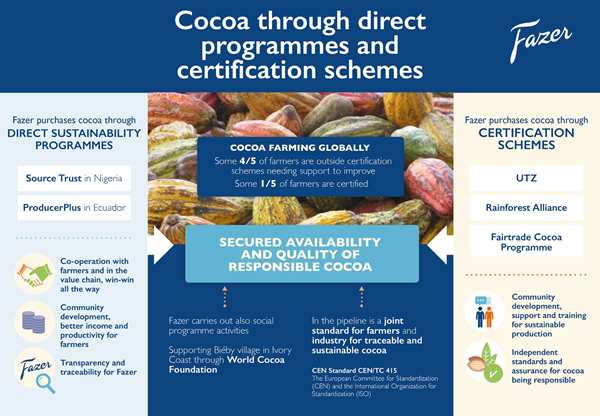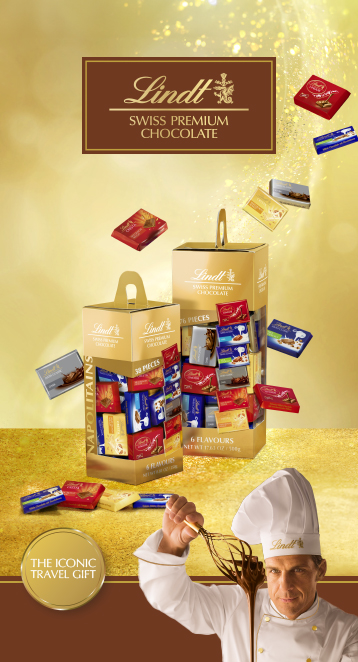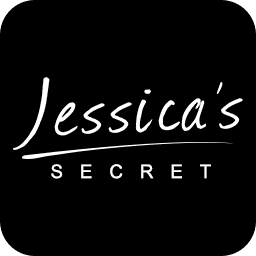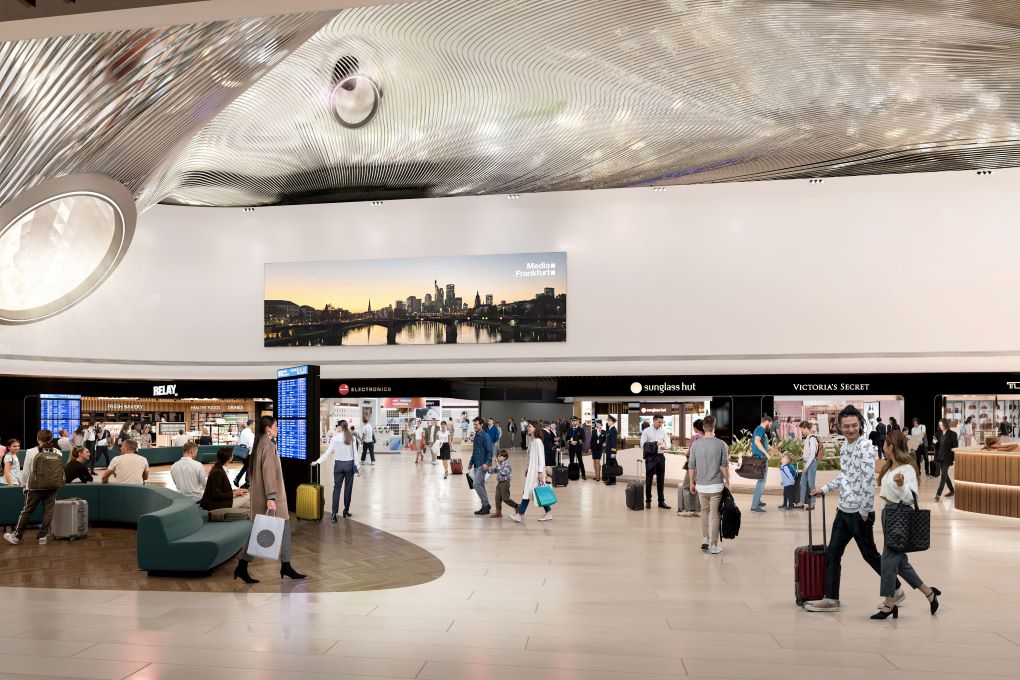
Confectionery centre: Fazer has a prominent display at Helsinki Airport |
FINLAND. Finnish confectioner Fazer can boast a fascinating history, one that it hopes will translate into a bright future on the international stage.
But boasting is not in the Finnish nature – as The Moodie Report found out on a visit to the company’s Helsinki headquarters recently.
Fazer is turning 125 years old this year, and there is plenty going on to mark the occasion. This is particularly so in the travel retail channel, the company’s third largest market.
It has been involved in travel retail since the 1970s, and today holds ninth position globally within the confectionery segment of the channel in terms of sales. Travel retail represents slightly less than 10% of its overall business.
The confectionery category in Helsinki and other Scandinavian countries is particularly significant, as Vice President, Global Travel Retail & International Confectionery Juha Ovaska explains. “Travel retail has always been a huge business in this part of the world. In some of the airports confectionery sales are almost 30% of the total, while in some other parts of the world it is less than 10%. So confectionery is very big in today’s world.” Percentage wise, Helsinki Airport has one of the highest contributions from confectionery globally.
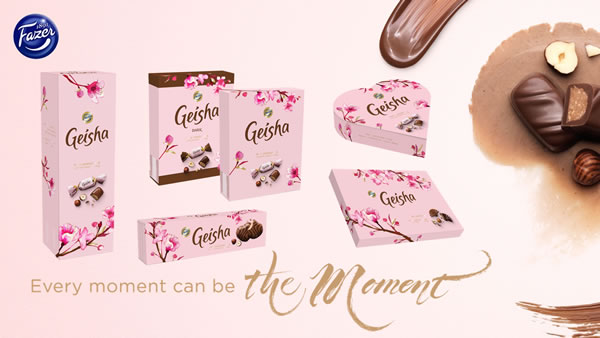
Japanese heritage: A new design and message should elevate Fazer’s Geisha brand even further |
Memoirs of a Geisha brand
Outside of its home Nordic and European markets, areas of particular interest for Fazer are the Middle East and Asia. In those markets its Geisha brand – a rich milk chocolate with hazelnut filling – is particularly popular and will be the company’s key brand in travel retail in 2016. A new packaging design and communication campaign being rolled out in the opening months of the year could increase its market penetration still further.
One of the main reasons for Geisha’s success in Asia is the narrative behind the brand, and the new campaign will seek to develop this. “We try as much as possible to bring out the stories behind the brands, as Asians in particular love this,” says Director, Fazer Confectionery International Miki Aho.
“Geisha may be a slightly unusual name for a chocolate coming from a Finnish company but it is a very interesting story which we try to engage with the consumer as well as having a visibility at the point of sale. [Third generation owner] Peter Fazer, a grandson of the founder Karl Fazer, really enjoyed the taste of the Japonica-pastry at the Fazer Café in downtown Helsinki, Finland. In 1962 he asked his product development team to try out the japonais filling together with his excellent milk chocolate – and the classic was born.
“The name and the design was given inspiration by Peter himself participating in the Tokyo Olympic Games in 1964 in sailing. It is interesting to tell this story to Asian customers.”
Fazer is also seeking to position the brand in the context of the modern world. “The new communication highlights the “˜moment’. People in today’s world have hectic lives and tight schedules, so enjoying that one specific or special moment of indulging yourself with a small piece of Geisha chocolate is something that we want to promote,” says Aho.
The new packaging is also crucial to the brand’s development. Aho says the designs have been received “amazingly well” by retailers. “The taste is something that people love so now we can just put it in a nice box which can be visible on the shelves,” he says. “The pink colour really stands out from the shelves when it is properly displayed.”
Fazer is also launching a new SKU for the brand – a small sharing pouch which targets new markets with the aim of encouraging people to try the chocolate. “Typically we have had quite big boxes, 295g or 225g, so with 160g we lower the threshold of giving Geisha a try. And we can also engage with good deals or promotions better with the smaller size.”
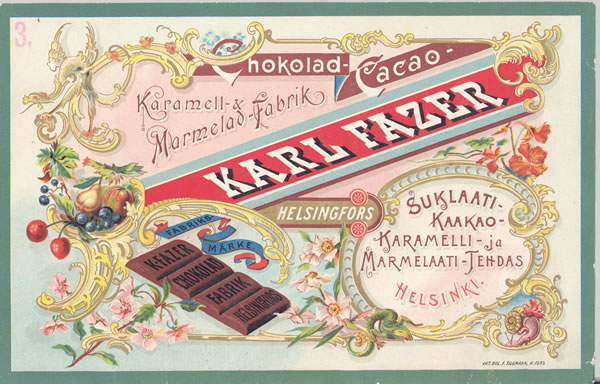
Storied history: An early Fazer chocolate label |
Profitable growth
Travel retail growth for Fazer in 2016 will be driven mainly by expansion into new geographies outside its core markets in Europe, while maintaining its position in the Nordics. “As a family-owned company, we aim for profitable growth both short and long term,” says Aho. Fazer may look beyond the Middle East and Asia but any expansion would have to make sense in the context of that guiding principle. Ovaska notes that while Fazer currently has no presence in North America, for example, “it remains to be seen how we tackle that market if and when we do”.
Fazer will need to employ a variety of strategies to both maintain its position in the market and achieve its growth ambitions. “Travel retail exclusives and limited editions, as well as destination packaging are further increasing their importance. So that is something that we still need to keep,” says Aho.
“Price pressure is another thing; price comparison between supermarket prices and duty free prices is something that is becoming a huge issue.”
One way in which the company is addressing these trends is to adjust some of its packaging for value sharing packs, says Aho, with Geisha a prime example.
Another method is to promote the company’s storied history. As one of the oldest family-run chocolate companies in the world, Fazer is keen to continue to “bring that into the picture”, according to Ovaska, while “also promoting the Finnish” heritage.
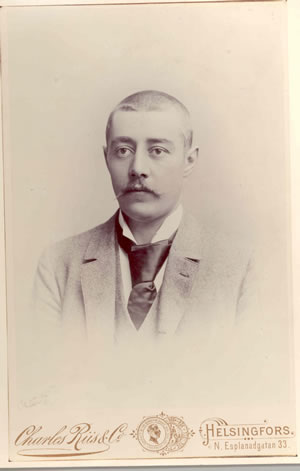 |  |
Family business: Founder Karl Fazer and current, fourth generation owner Majlen Fazer | |
Fazer has a multi-brand strategy, meaning that different brands cater to different types of consumer and usage occasions. The best performing brands therefore vary across markets. In the Nordics, its best-selling brands are its flagship chocolate brand Karl Fazer, Marianne (a hard mint candy with chocolate filling), Dumle (chocolate covered toffee) and Tyrkisk Peber (a hard-boiled liquorice candy). But not all of these are transferable to other markets.
“The Karl Fazer brand is definitely the number one in Nordic travel retail,” says Aho. “But then the further we go – especially in the Middle East and Asia -Geisha becomes the number one brand.
“There are specific reasons for this. Karl Fazer is a premium milk chocolate which is loved by Finnish and Nordic people. But beyond the Nordics the competition in milk chocolate tablets gets really tough. There are so many different types of them in the world and standing out from that crowd is quite difficult. Geisha though has a stand-out pink design, and the taste profile is rich with hazelnut truffle filling.”
As well as Geisha, Fazer will roll out a brand and packaging renewal for Marianne this year, with high expectations for commercial success for both lines. In 2015, the Dumle and Fazermint brands delivered strongly following upgrades to their packaging and design.
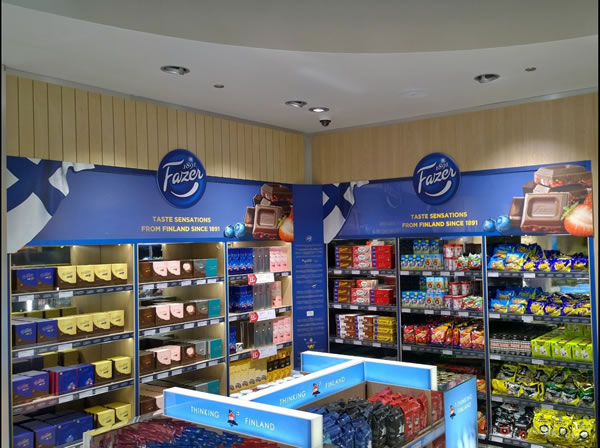
The confectioner has a number of brands for different types of consumer and usage occasions |
Challenging environment
Ovaska says Fazer’s overall travel retail performance in 2015 was positive, despite challenges with global unrest and a declining Russian market. “It was a slow start at the beginning of the year, but from March things got better,” he notes. “The unrest in the world has influenced all of us, so we don’t need any more crises. But we cannot project these things in our sales. So we have grown in 2015 and it has been a positive year.”
During 2015, various crises have had a significant impact on Fazer’s travel retail business. “The total picture looks quite positive but the regional differences are surprisingly big. For example, our business in Russia, Malaysia, Turkey and Egypt has suffered.”
It is such unpredictable events that Fazer is most wary of in 2016 – and will ultimately determine its level of success.
“I think we are going to continue with the good, positive mood in 2016,” says Ovaska. “We have new designs coming, so it’s going to be positive. We are very confident having had discussions with the operators, with our clients, and they are encouraging. Things are moving in the right direction – but if something happens that is out of our hands that can change things. But that’s the same for everybody.”
Another issue for Fazer, like any confectionery manufacturer, is securing store space. “Everybody wants more space in the store,” says Ovaska. “That’s the big challenge, but I think all the confectionery players should work to make it so that our brands are more attractive for the retailers. I think a good example is here in Scandinavia, where confectionery is a major part of the total sales, so it can be done. But if you don’t offer a good enough space in the shop how do consumers find the products?”
New travellers from developing markets will also drive the growth of confectionery, which Fazer says typically addresses all types of travellers and has the most affordable unit price. “As a highly impulsive category, we trust that confectionery will continue to grow with the industry and even capture a larger share of the total travel retail business,” affirms Aho.
However, he notes that the trend of e-commerce for travel retail might have a negative impact on confectionery’s share of total travel retail. This is because the impulsiveness of the category and the personalised point of sale presentation is difficult to achieve in e-commerce channels. “In e-commerce, shoppers are typically looking for one specific brand or one specific type of product and I would say that confectionery might lose some of the total travel retail share in that channel. So that might be a challenge in our category,” says Aho.
Throughout its 125-year history, Fazer has overcome many challenges to become one of the top brands in the Nordics and a major player within the confectionery segment in travel retail. With many potential areas of expansion, 2016 could be another landmark year in the company’s story.



